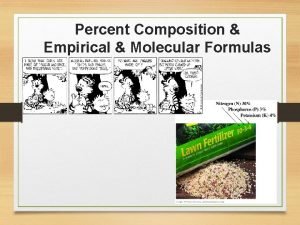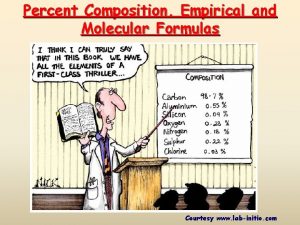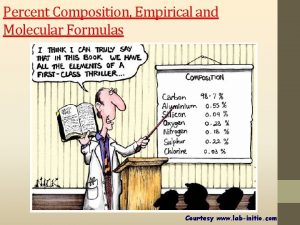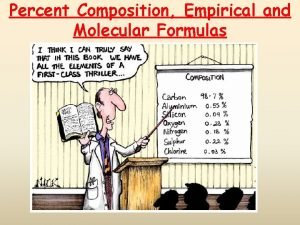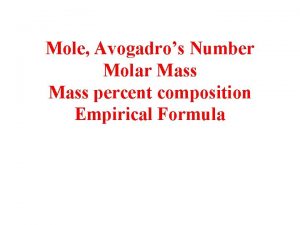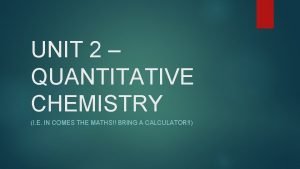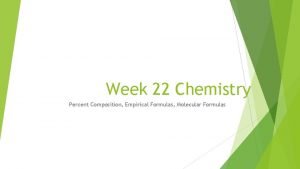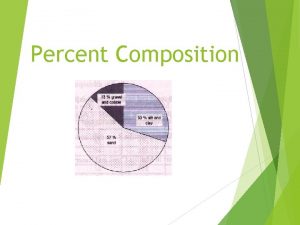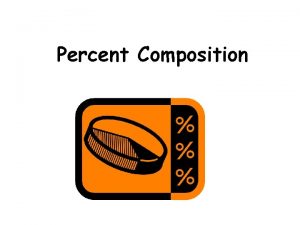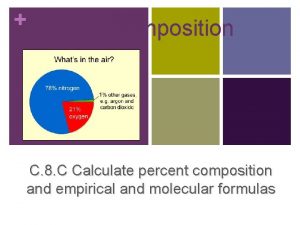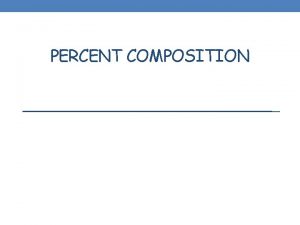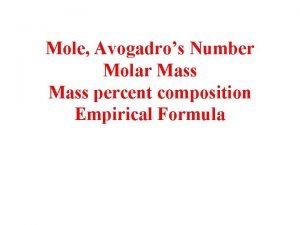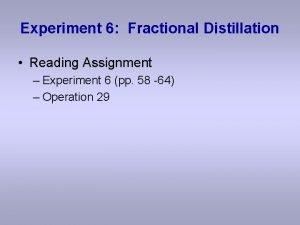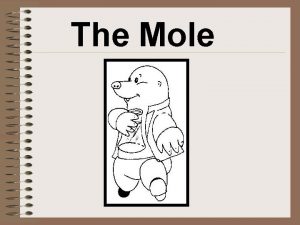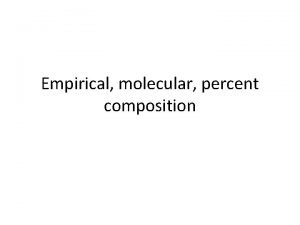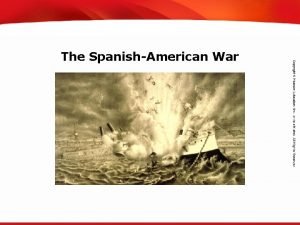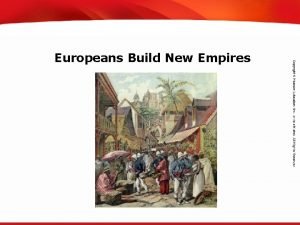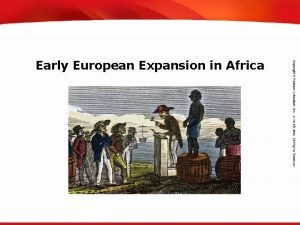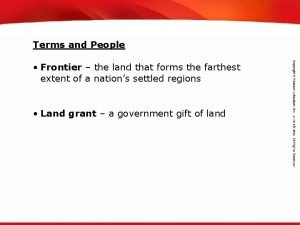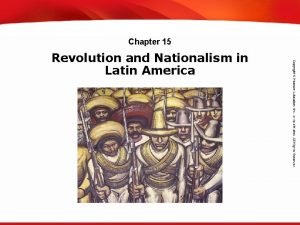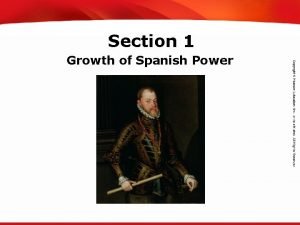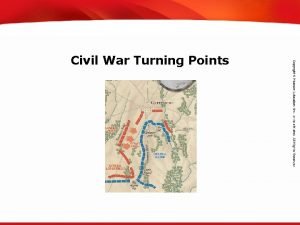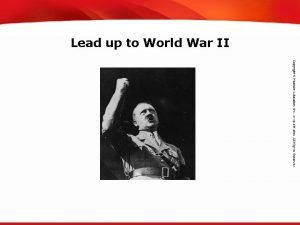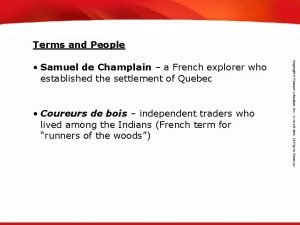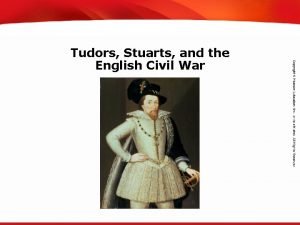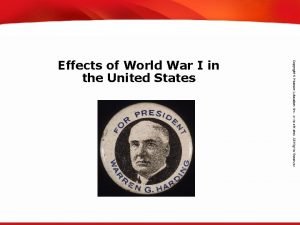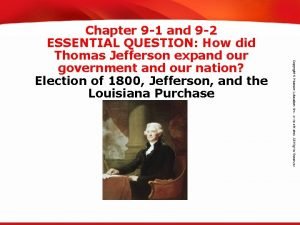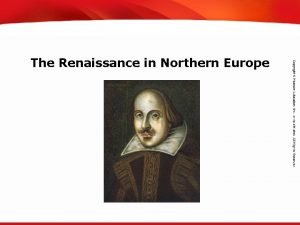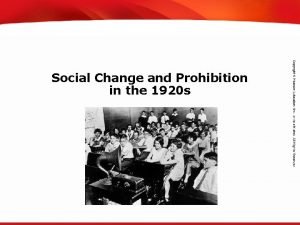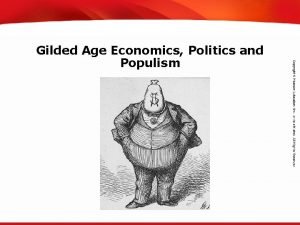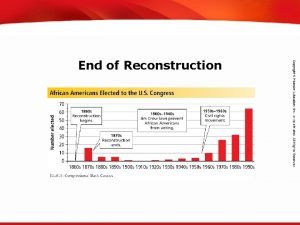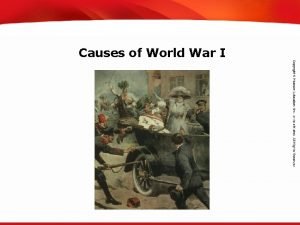TEKS 8 C Calculate percent composition and empirical





















- Slides: 21

TEKS 8 C: Calculate percent composition and empirical and molecular formulas. The Renaissance in Italy

TEKS 8 C: Calculate percent composition and empirical and molecular formulas. Objectives • Describe the characteristics of the Renaissance and understand why it began in Italy. • Identify Renaissance artists and explain how new ideas affected the arts of the period. • Understand how writers of the time addressed Renaissance themes.

TEKS 8 C: Calculate percent composition and empirical and molecular formulas. Terms and People • humanism – the Renaissance intellectual movement that studied classical cultures to increase understanding of their own times • humanities – subjects such as grammar, poetry, rhetoric, and history • Petrarch – Florentine humanist, poet, and scholar who assembled a library of Greek and Roman manuscripts to encourage learning • Florence – an Italian city-state that produced many gifted artists, scholars, scientists, and architects

TEKS 8 C: Calculate percent composition and empirical and molecular formulas. Terms and People (continued) • patron – person who provides financial support for the arts • perspective – the artistic technique that allows an artist to portray depth and three-dimensional qualities by making distant objects smaller • Leonardo – artist, scientist, and inventor best known for the Mona Lisa and The Last Supper and sketches of inventions such as flying machines • Michelangelo – artist; created sculpture of David and painted the ceiling of the Sistine Chapel

TEKS 8 C: Calculate percent composition and empirical and molecular formulas. Terms and People (continued) • Raphael – painter; blended Christian and classical styles; famous works include The School of Athens and his portrayals of the Madonna • Baldassare Castiglione – wrote the Book of the Courtier describing the manners and qualities aristocratic men and women should display • Niccolò Machiavelli – wrote The Prince, describing how to rule in an age of ruthless power politics

TEKS 8 C: Calculate percent composition and empirical and molecular formulas. What were the ideals of the Renaissance, and how did Italian artists and writers reflect these ideals? A new age dawned in Western Europe, given expression by remarkable artists and thinkers. This age is called the Renaissance, meaning “rebirth. ” It began in the 1300 s and reached its peak around 1500. The Renaissance marked the transition from medieval times to the early modern world.

TEKS 8 C: Calculate percent composition and empirical and molecular formulas. The Renaissance began in Italy in the 1300 s. Renaissance thinkers: • sought to bring Europe out of disorder and disunity. • placed greater emphasis on individual achievement. • tried to understand the world with more accuracy. • revived interest in classical Greek and Roman learning. The Renaissance ideal was a person with interests and talents in many fields.

TEKS 8 C: Calculate percent composition and empirical and molecular formulas. During the Renaissance there was a new spirit of adventure and curiosity. • Trade assumed greater importance than before. • Navigators sailed across the oceans. • Scientists viewed the universe in new ways. • Writers and artists experimented with new techniques.

TEKS 8 C: Calculate percent composition and empirical and molecular formulas. Europe in 1500 Italy’s central location helped make it a center for the trade of goods and ideas.

TEKS 8 C: Calculate percent composition and empirical and molecular formulas. The Italian city-states dominated trade and provided a link between Asia and Europe. Trade routes carried new ideas from Asia and from Muslim scholars who had preserved Greek and Latin learning. Banking, manufacturing, and a merchant network provided the wealth that fueled the Renaissance.

TEKS 8 C: Calculate percent composition and empirical and molecular formulas. The heart of the Italian Renaissance was humanism. • Although most Renaissance humanists were devoutly religious, they focused on worldly issues rather than religion. • They believed education should stimulate creativity. • They emphasized study of the humanities, such as grammar, rhetoric, poetry, and history. Humanists studied the works of Greece and Rome to learn about their own culture.

TEKS 8 C: Calculate percent composition and empirical and molecular formulas. Italy’s city-states played an important role in the Renaissance. Each city was dominated by a wealthy and powerful merchant family. • These families brought trade and wealth, and provided leadership. • They were interested in art and emphasized personal achievement. • They were patrons of the arts and supported artists, writers, and scholars.

TEKS 8 C: Calculate percent composition and empirical and molecular formulas. The Medici family of merchants and bankers controlled Florence after 1434. • Lorenzo de' Medici invited poets, philosophers, and artists to the city. • Florence became a leader, with numerous gifted artists, poets, architects, and scientists. Ordinary people began to appreciate art outside of the Church.

TEKS 8 C: Calculate percent composition and empirical and molecular formulas. Artists continued to portray religious themes, but they did so against classic Greek and Roman backgrounds. • Donatello created a life-size soldier on horseback, the first sculpture of this size since ancient times. • In The School of Athens, Raphael painted a gathering of Greek and Roman scholars that included the faces of Michelangelo, Leonardo, and himself.

TEKS 8 C: Calculate percent composition and empirical and molecular formulas. Renaissance artists used new techniques, leading to greater realism. They returned from the stylized forms of the medieval period to the realism of classic Greece and Rome. They used new techniques to represent both humans and landscapes.

TEKS 8 C: Calculate percent composition and empirical and molecular formulas. Perspective allowed for more realistic art. Distant objects appeared smaller. One new technique was perspective, credited to Filippo Brunelleschi.

TEKS 8 C: Calculate percent composition and empirical and molecular formulas. Artists also used new oil paints that reflected light, and used shading techniques to make objects look more real. • Objects were portrayed in a three-dimensional fashion. • Painters studied human anatomy and drew from observing models, resulting in more accuracy.

TEKS 8 C: Calculate percent composition and empirical and molecular formulas. Leonardo da Vinci was an artist and inventor. He studied botany, optics, anatomy, architecture, and engineering. The mysterious smile of the woman in his painting Mona Lisa has intrigued viewers for centuries. His sketchbooks are full of ideas for inventions, such as flying machines and submarines.

TEKS 8 C: Calculate percent composition and empirical and molecular formulas. Michelangelo Buonarroti was a sculptor, engineer, painter, architect, and poet. • He is best known for sculptures such as David and for painting the ceiling of the Sistine Chapel. • He also designed the dome for St. Peter’s Cathedral in Rome.

TEKS 8 C: Calculate percent composition and empirical and molecular formulas. Writers were also humanists. Some described how to succeed in the Renaissance world. Baldassare Castiglione’s Book of the Courtier described the manners and behavior of the ideal aristocratic man and woman. • Men played music and knew literature and history but were not arrogant. • Women were kind, graceful, and lively, and possessed outward beauty.

TEKS 8 C: Calculate percent composition and empirical and molecular formulas. Niccolò Machiavelli’s The Prince was a guide for rulers to gain and maintain power. • Rather than discuss high ideals, he stressed that the ends justify the means. • The term Machiavellian has come to refer to the use of deceit in politics. • Critics saw Machiavelli as cynical, but others said he was simply providing a realistic look at politics.
 Empirical formula from percentages
Empirical formula from percentages Calculating percentage composition by mass
Calculating percentage composition by mass How to find the emperical formula
How to find the emperical formula Empirical and molecular formula
Empirical and molecular formula Empirical formula to percent composition
Empirical formula to percent composition How to calculate empirical formula using percentages
How to calculate empirical formula using percentages Formula for molecular formula
Formula for molecular formula How to find the empirical formula from percent composition
How to find the empirical formula from percent composition Mass percentage formula
Mass percentage formula Percentage composition
Percentage composition Percent composition examples
Percent composition examples How to calculate valid percent
How to calculate valid percent Percent composition of m&m lab
Percent composition of m&m lab Part/whole x 100
Part/whole x 100 Percent composition definition
Percent composition definition What is the percentage composition of oxygen
What is the percentage composition of oxygen Chemistry percent composition
Chemistry percent composition Percent composition
Percent composition Mass percent formula
Mass percent formula Percent composition gas chromatography
Percent composition gas chromatography Molar mass of ibuprofen
Molar mass of ibuprofen Percent composition of magnesium carbonate
Percent composition of magnesium carbonate

